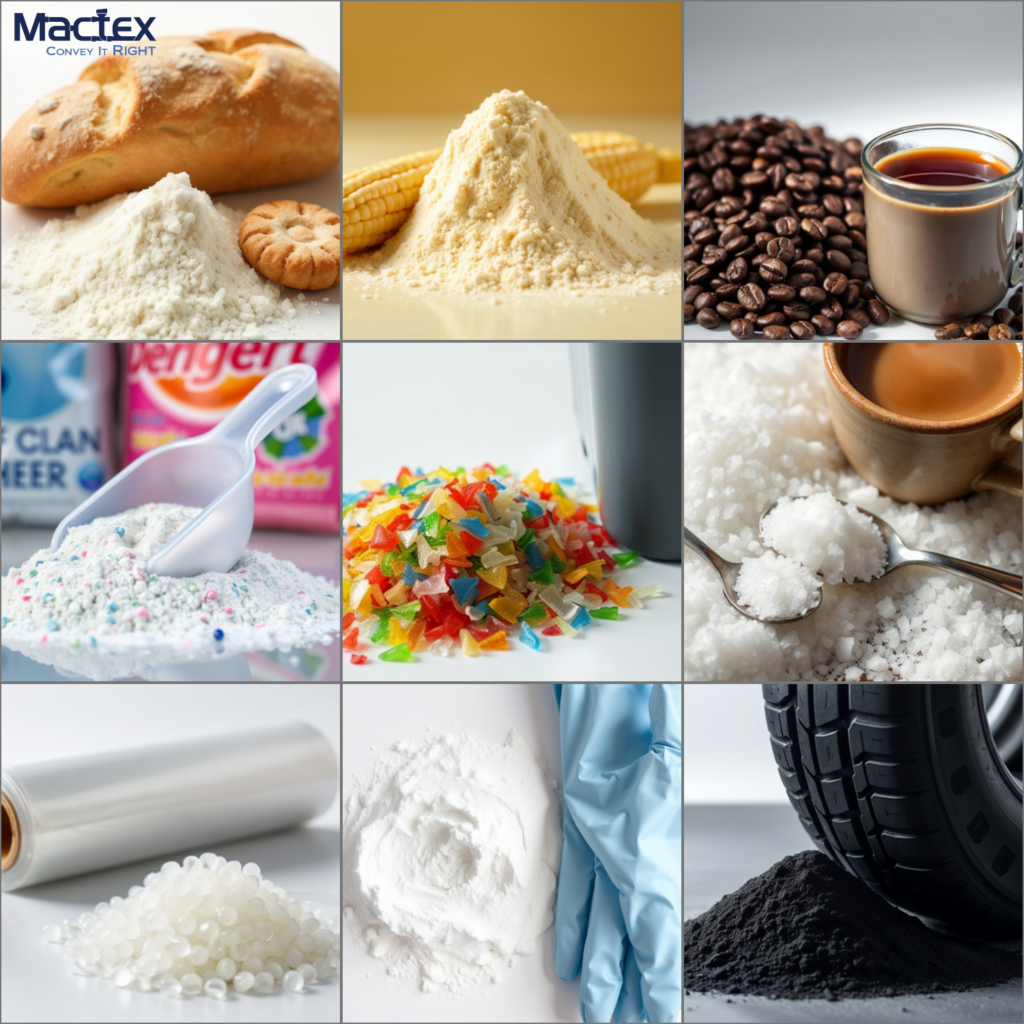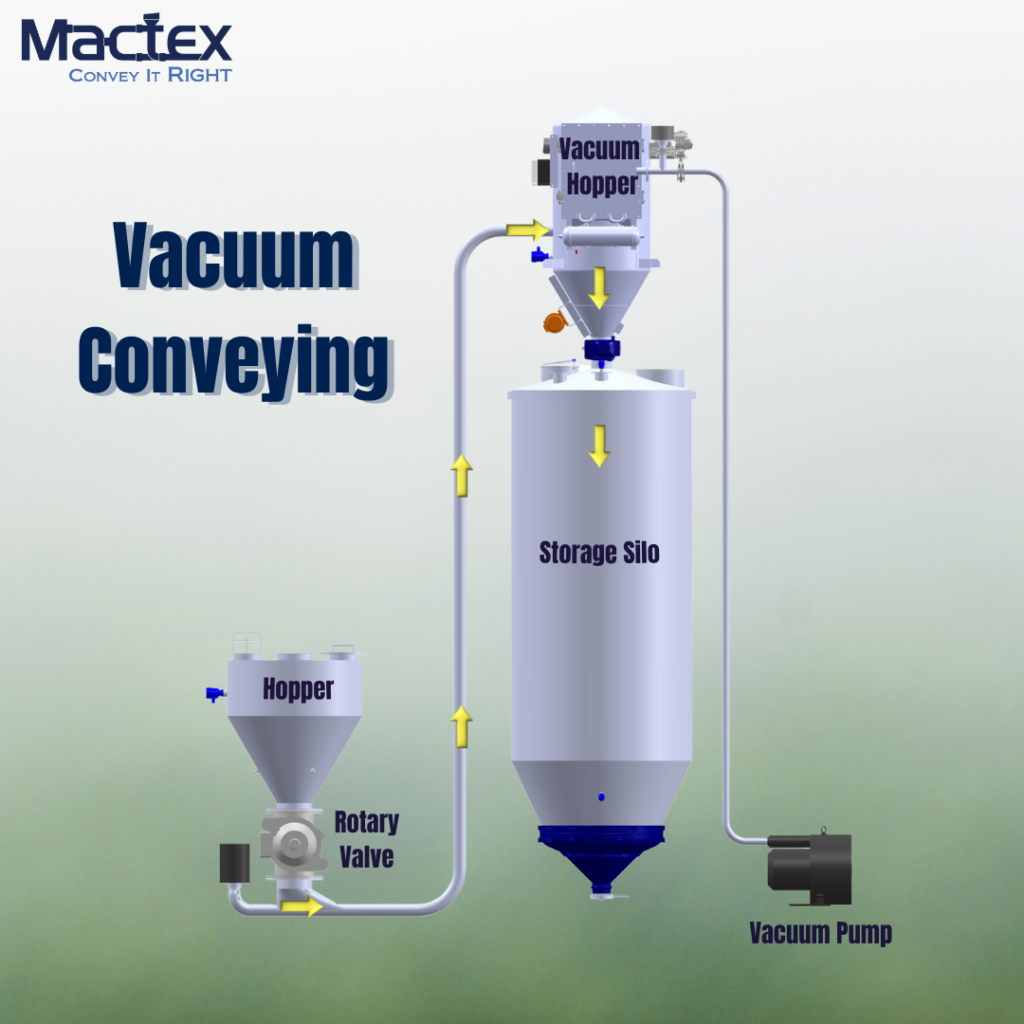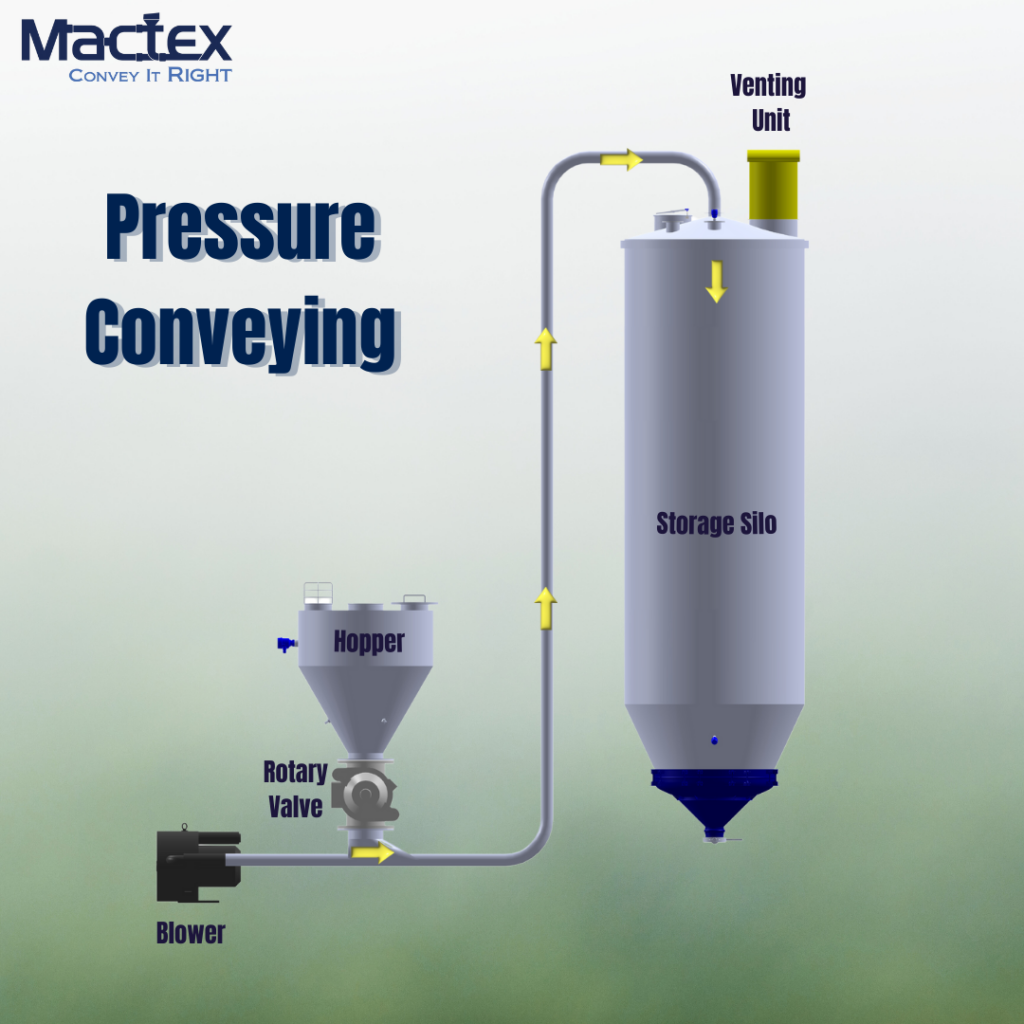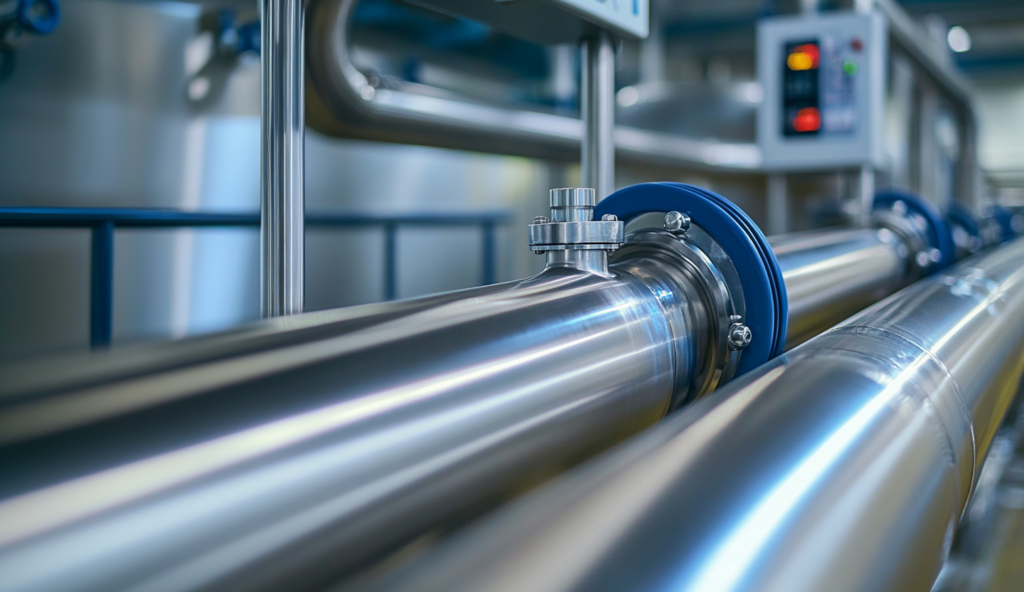What are pneumatic conveying systems and how do they work?
Pneumatic conveying systems use gas streams to transfer dry solid materials through enclosed pipelines from one area to another.
Often used for industrial and commercial purposes, these systems help to move powders, pellets, granules and other fluidizable materials without mechanical conveyors.
While mechanical conveying systems typically use belts, buckets, and drag chain conveyors, pneumatic conveying systems are designed to transport solid materials via gas streams.
An overview of how pneumatic conveying systems work
A pneumatic conveying system includes: a material introduction point, piping, a receiving point, and a gas flow movement device.
These systems work by creating a pressure difference between the start and end of the enclosed conveying line using blowers or vacuum pumps. This pressure difference generates gas flow movement.
In the pipelines, the moving gas stream, created by either vacuum or pressure, exerts a propulsive force on the solid material. The combination of pressure differential and airflow moves the solid material efficiently.
Applications of pneumatic conveying systems

Pneumatic conveying systems are used across various industries, including:
F&B: Transporting ingredients like flour, sugar, spices, coffee beans, and grains, ensuring contamination-free handling.
Pharmaceuticals: Conveying active pharmaceutical ingredients, excipients, fine chemical powders, and tablet granules with precision and hygiene.
Chemicals: Moving plastic resins, detergents, fertilisers, and other chemical powders safely and efficiently.
Energy: Transporting coal dust, biomass materials, wood pellets, and other alternative fuels for energy production.
Recycling: Transferring dried plastic flakes to various processing stages in an efficient and accurate manner.
MACTEX Sdn Bhd specialises in solid bulk material handling, including designing and installing pneumatic conveying systems. They offer customised turnkey solutions to meet the diverse needs of different industries. MACTEX Sdn Bhd supplies pneumatic conveying components for after sales service or replacement such as blower package, vacuum package, rotary valve, compression coupling, and filter bags.
Understanding different types of pneumatic conveying systems:
Pneumatic conveying systems fall into two broad categories: vacuum pneumatic conveying systems and pressure pneumatic conveying systems.
Depending on the purpose of the system, it can be designed to handle either dilute phase conveying or dense phase conveying.
Vacuum Conveying Systems

Vacuum pneumatic conveying systems use negative pressure (vacuum) to move dry solid materials through a pipeline. Vacuum pumps create a pressure differential by sucking air out of the pipeline. The dry solid material material, stored in a feeding hopper, enters the system at atmospheric pressure and is drawn into the conveying line. In vacuum conveying, a rotary airlock ensures continuous material feed with metering purpose.
Pressure Conveying Systems

Unlike vacuum conveying systems, pressure pneumatic conveying systems use positive pressure to push materials through a pipeline. Blowers generate pressure to move the dry solid material. Materials are fed into a conveying line using rotary valves as airlock to prevent pressure loss.
Pressure conveying systems can handle longer distances and larger capacities, making them suitable for both horizontal and vertical conveying applications.
Dilute Phase Conveying
In dilute phase conveying, dry solid materials are transported at high velocities while suspended in air within the pipeline. This method is suitable for light, non-abrasive, and non-fragile materials like fine powders, granules, as well as grain.
Bulk material is diluted with air and very fluid, giving it the flexibility to be transferred from multiple inputs and outputs to different locations, if needed.
Dilute phase conveying is characterised by high air velocities (20-30m/s), low air pressure, larger pipes, and longer distances. It is also cheaper and less complex to build, compared to dense phase conveying.
It can be used for both vacuum conveying systems and pressure conveying systems.

Dense Phase Conveying
In dense phase conveying, bulk materials are transported in a more compact, slug-like form at lower velocities. As the dense material builds up, the pressure in the system also builds and pushes the material forward through the conveying line.
This makes dense phase conveying suitable for heavy, abrasive, and fragile materials.
Dense phase conveying is characterised by low air velocities (5-10m/s), higher air pressure, smaller pipes, and shorter distances. It is more expensive to build due to heavier components and typically does not convey over 100 metres.
Not sure which pneumatic conveying system or conveying method is suitable? MACTEX Sdn Bhd provides tailored solutions to meet the material handling needs of businesses across a wide range of industries. Find out more about its pneumatic conveying solutions.
Pros and cons of using a pneumatic conveying system:
Pros of pneumatic conveying
- Pneumatic conveying systems help improve operational efficiency and minimise manual handling.
- The pipelines are enclosed, protecting against dust emissions and external contaminants.
- With fewer moving parts compared to mechanical conveying, pneumatic conveying systems can be easier and more cost-effective to maintain.
- Thanks to the controlled atmosphere provided by dilute phase and dense phase pneumatic conveying systems, it can help minimise waste of dry solid materials.
- Pneumatic conveying systems offer precise control over material flow rates, ensuring accurate and consistent delivery of materials.
- Due to the compact nature of pneumatic conveying lines, the system takes up less floor space and has the flexibility to be routed around existing equipment.
- The system can also accommodate multiple pickup and discharge points, adding to its versatility.
- Pneumatic conveying systems are capable of handling both fragile and abrasive materials with a selection of suitable pneumatic conveying methods.
Cons of pneumatic conveying
- Pneumatic conveying systems rely on changing air pressure to produce conveying power, which may be less efficient than mechanical conveying lines.
- These systems are typically used for smaller volumes of materials; higher volumes may present difficulties and inefficiencies.
- Not all dry solid materials are suitable for dilute phase and dense phase pneumatic conveying — materials with high bulk density, large particles, and sticky or wet materials may pose challenges.
- Dust needs to be extracted from pneumatic conveying systems, which may require a larger dust collection system.
- The initial cost of installing a pneumatic conveying system can be higher than mechanical conveying systems.
Explore reliable, cost-effective pneumatic conveying solutions with MACTEX Sdn Bhd
All in all, there are many things to consider when choosing a pneumatic conveying system.
MACTEX Sdn Bhd is a leading expert in pneumatic conveying systems, providing world-class service and turnkey material handling project management.
The company prides itself in delivering quality, comprehensive, innovative, and consistent solutions related to bulk powder handling, conveying, processing, or storage.
Each pneumatic conveying system project handled by MACTEX Sdn Bhd will undergo various phases. These include feasibility studies, conceptual design, M&E fabrication & installation, automation & programming systems, testing & commissioning, as well as performance warranty.
Ultimately, MACTEX Sdn Bhd aims to help clients improve the efficiency and productivity of their operations, while offering peace of mind from the start to end of every project.
Discover how MACTEX Sdn Bhd’s pneumatic conveying systems support businesses in achieving higher standards of excellence and reliability through its tailored approach.

